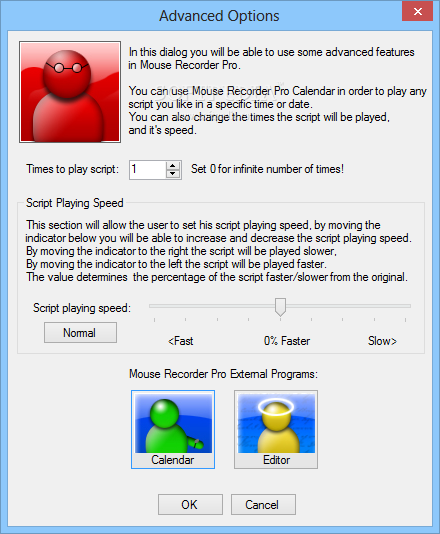
- #Mouse recorder tutorial update#
- #Mouse recorder tutorial code#
- #Mouse recorder tutorial series#
- #Mouse recorder tutorial free#
If the automatic abilities of macros sound appealing, check out use cases for robotic process automation (RPA), which take advantage of technologies like optical character recognition (OCR) to capture and automate data and actions that macros can’t handle. Macros are a great on-ramp to more advanced automation use cases.
#Mouse recorder tutorial update#
But with macros, you can fill in and update status fields automatically. Updating status field in a system: programs like Salesforce and SAP often require the filling in of a lot of data fields. Making business rule-based decisions: though macros don’t incorporate artificial intelligence (AI), they can still make automatic decisions and complete automatic actions if business rules are clear and logically enforced. Starting or closing cases: with macros, you can start or close a case in a program like Salesforce, enabling sales employees to move faster.Įxception-flagging: with macros, you can automatically identify an exception to a process and flag it for review.

Keying or screen scraping: with macros, you can automatically capture key actions and on-screen elements. Use cases for macro recording range from basic keying to exception-flagging: The UiPath macro recorder is designed for all the requirements browsers and web apps have.Ĭitrix and other virtualized environments: these macros, which many macro recorders don’t support, are useful for recording actions and processes in virtual machines (VMs), virtual network computing (VNC), and Citrix environments. Web macros: these macros are useful for recording and extracting data on web forms.

You use them to record most actions and processes in desktop applications. There are three main types of macros:īasic and desktop macros: these macros are the most common type. Basically, you can replace any process you complete via scrolling, clicking, and typing with a macro. What can you record with a macro recorder?Ī macro recorder can record all manner of mouse events and keyboard actions. With the UiPath macro recorder, you can do all three. These three basic steps-record, edit, and playback-form the basic actions for every macro recording. Playback: macros are saved in your recorder so that you can use them later.
#Mouse recorder tutorial series#
Record: after starting a recording, the macro recorder captures a series of mouse and key actions you complete.Įdit: once you’ve recorded the macro, you can edit its properties, values, and sequence. How does a macro recorder work?Ī macro recorder works in three steps: you record the process you wish to automate, edit the recorded process as necessary, and then playback the macro whenever you need it. The UiPath macro recorder can take care of your macro recording needs while also providing you an on-ramp into the rest of the UiPath platform, which you can use for graphic user interface (GUI), mainframe, and desktop automation. Some of the more complex macros are key tools for programming in languages like Lisp. The simplest macros enable users to automatically substitute text and insert shortcuts. Though macros originated in the earliest days of computing, most users are likely familiar with them due to their popularity in programs like Microsoft Excel. Macros date back to the 1950s, and their essential purpose hasn’t changed since: save time by using programmable patterns to return preset outputs for specified inputs.
#Mouse recorder tutorial free#
VBA provides the ability to trap unexpected errors giving you a second chance to deal with them.Macro Recorder: Your Guide to a Free Tool to Automate Keyboard And Mouse Actions Blog:

Secondly – when all else fails – you can “trap” the error. If the file does not exist, you can display a message to your user or exit gracefully without your macro crashing. One example is checking to confirm a file exists before trying to open it.
#Mouse recorder tutorial code#
That is, code which tries to anticipate where problems may occur and pre-empts the problem. In contrast, you can write error handling code to manage how an error should be managed.įirstly, you can write defensive code. You can't handle errors in a recorded macro. That is, an unexpected – and unhandled – error which stops the code running. When things go wrong, your VBA macro will encounter a runtime error. Maybe your code tries to copy data to a worksheet which has been renamed. Maybe your code tried to open a file that doesn’t exist. Let’s face it, even some of the best written (or recorded) VBA code may encounter a situation you didn’t expect or plan for.


 0 kommentar(er)
0 kommentar(er)
